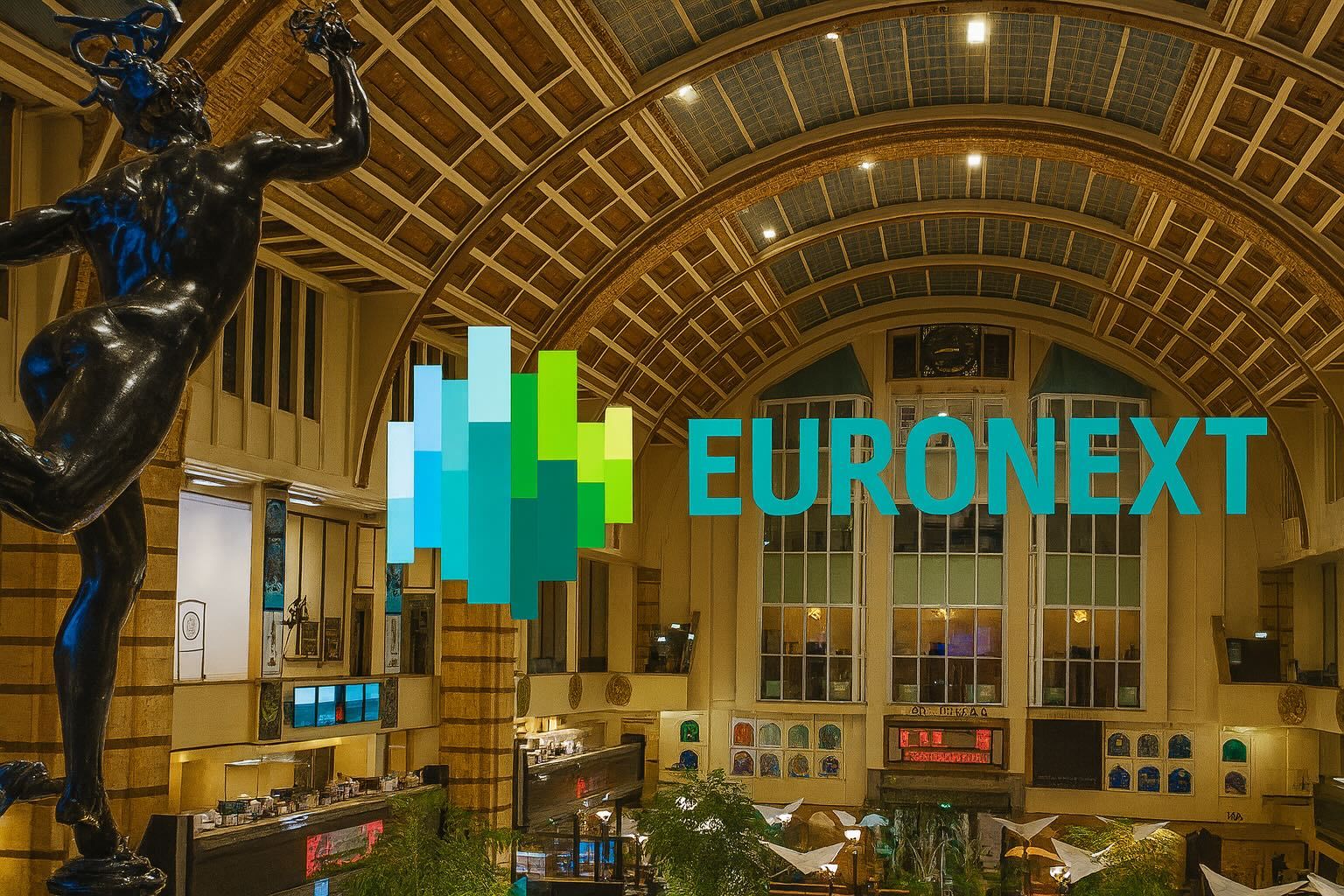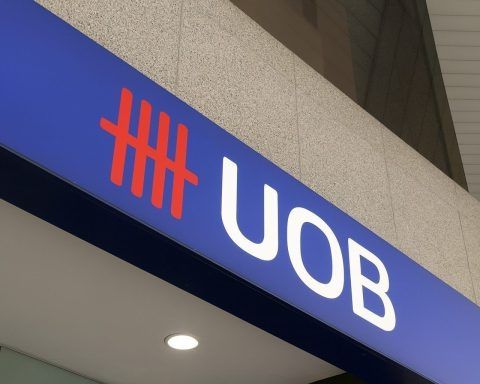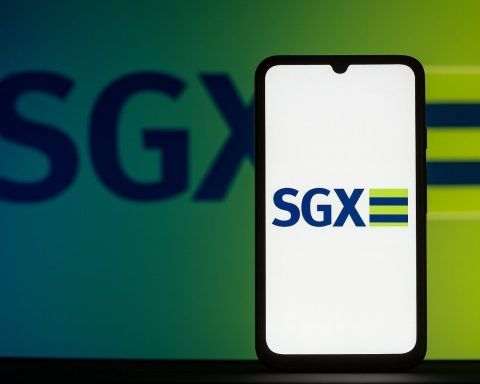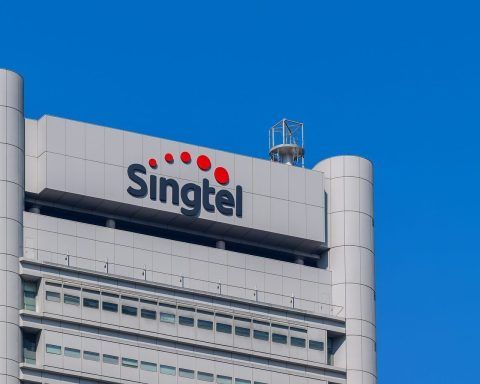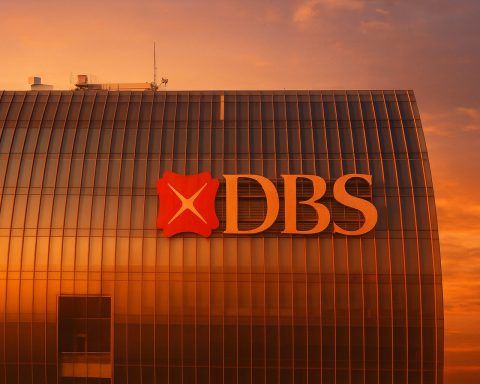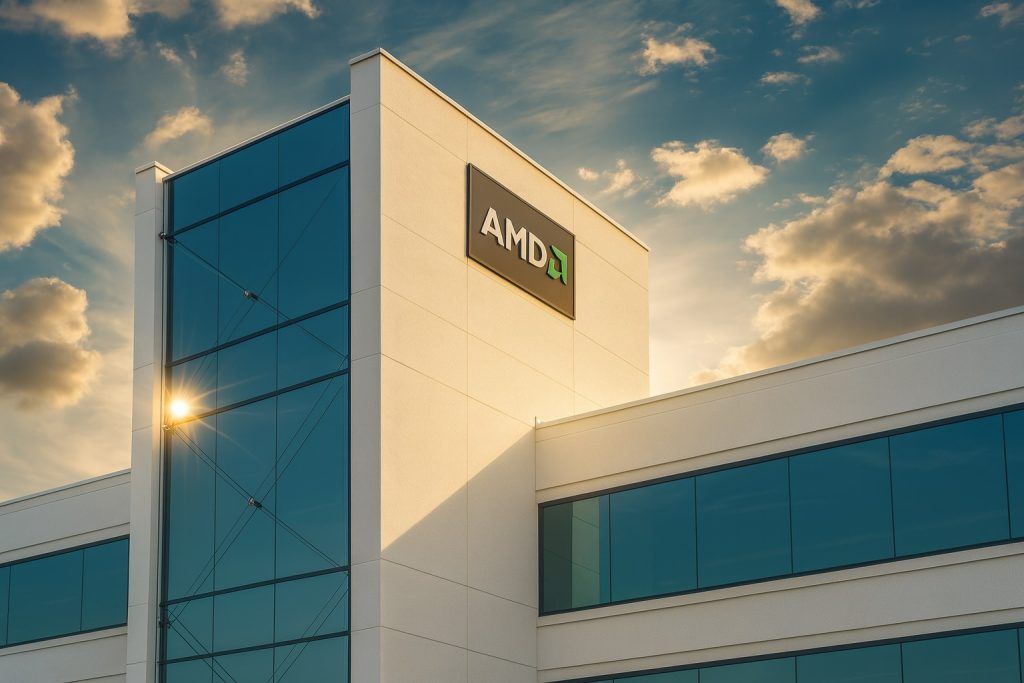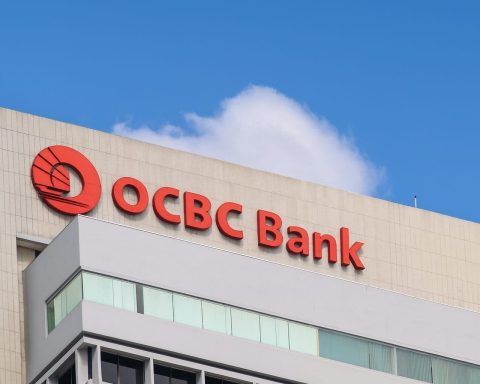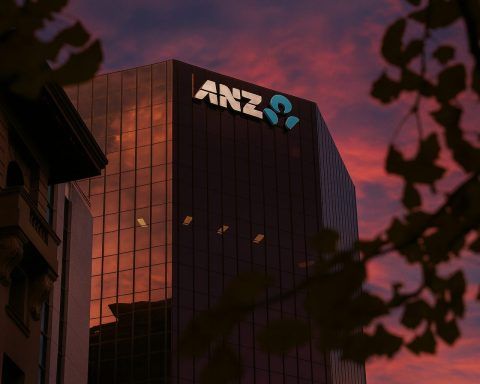- Oldest Modern Exchange: Euronext Amsterdam originated as the Amsterdam Stock Exchange in 1602, widely regarded as the world’s first modern securities market [1]. It merged with the Paris and Brussels exchanges in 2000 to form Euronext, Europe’s first pan-national bourse [2].
- Pan-European Hub: Today it is part of the Euronext NV group, which spans six countries (Amsterdam, Paris, Brussels, Dublin, Lisbon, Oslo, plus recently Milan) and lists ~1,300 companies across Europe [3]. Euronext’s registered headquarters is in Amsterdam, and it continues to expand (in 2025 it launched an offer to acquire the Athens stock exchange) [4].
- Major Indices: The flagship AEX index (Amsterdam Exchange Index) tracks the top 25 Dutch blue-chip stocks (large-caps) on Euronext Amsterdam [5]. The AMX (Midkap) covers the next 25 mid-sized companies, and the AScX (Small Cap) covers ranks 51–75 (25 small-cap firms) [6]. These indices broadly represent the Dutch market’s sectors from high-tech to energy and finance.
- Trading Hours & Structure: The exchange operates Monday–Friday from 9:00 a.m. to 5:30 p.m. Central European Time (CET) [7] with continuous electronic trading. It’s a fully electronic order-driven market with opening/closing auctions and no physical trading floor – though ceremonial gong (bell) ceremonies still open each session, preserving tradition. Euronext Amsterdam is a regulated market under EU MiFID II rules, run by Euronext Amsterdam N.V., which oversees listings and enforces exchange rules [8]. Regulatory oversight (e.g. prospectus approval) is provided by the Dutch Authority for Financial Markets (AFM) [9].
- Key Listings: Euronext Amsterdam hosts 140+ listed companies [10], including global industry leaders. Notable names are ASML Holding (semiconductor equipment giant), Adyen (fintech payments), Shell (multinational energy company), ING Group (banking), Heineken (brewing), Ahold Delhaize (retail supermarkets), ArcelorMittal (steel), Philips (health tech), Prosus (tech investment), and more. These firms span high-tech, energy, finance, consumer goods, and industrial sectors, underscoring Amsterdam’s role connecting the Dutch economy to global markets.
- European Market Role: As part of Euronext, Amsterdam is integral to European finance. The exchange’s large-cap index AEX had a free-float market cap around €850 billion in early 2021 [11] and has grown since, reflecting heavyweight contributors like ASML and Shell. Euronext Amsterdam’s vibrant equity market attracts international investors seeking Europe’s relative stability – a trend strengthened by recent volatility elsewhere (Euronext’s CEO noted Europe’s perceived “safe haven” status amid global uncertainty [12]). Amsterdam’s exchange has also been a pioneer in financial innovation (it introduced the world’s first stock options market in 1978 [13]) and continues to be a key venue for IPOs and capital-raising in continental Europe.
- Recent Performance: In October 2025, the Amsterdam market surged to record highs, riding a broader European rally. On October 2, the AEX index hit an all-time peak – buoyed by industrial and tech stocks – as chipmakers ASML and ASMI jumped 4–6%, propelling the Dutch index to a record close [14]. The market’s year-to-date gains were in the low double-digits by early October, roughly in line with Europe’s STOXX 600 (~+11%) and tracking the global upswing led by technology and banking shares [15].
Euronext Amsterdam: Overview and Historical Significance
Euronext Amsterdam is the Amsterdam-based stock exchange and one of the principal markets within the pan-European Euronext group. It traces its roots back over four centuries, giving it a unique historical significance. Founded in 1602 as the Amsterdam Stock Exchange, it facilitated trade in shares of the Dutch East India Company (VOC) and is often cited as the world’s first formal stock market [16]. The exchange pioneered many concepts of modern finance – from continuous trade in company equity to investor speculation – helping Amsterdam become a cradle of early capitalism. By 1913, the exchange had moved to its grand building at Beursplein 5 in central Amsterdam (designed by architect Joseph Cuypers), which remains its iconic home [17].
Beursplein 5 in Amsterdam – the historic stock exchange building opened in 1913, now home to Euronext Amsterdam. This exchange is widely regarded as the oldest modern securities market in the world [18].
Over the centuries, the Amsterdam exchange evolved with the times. It introduced new financial instruments (for instance, establishing Europe’s first options market in 1978 [19]) and weathered wars, crashes, and booms. In September 2000, it entered a new era by merging with the Paris and Brussels exchanges to form Euronext NV, the first cross-border stock exchange in Europe [20]. This merger (later joined by Lisbon, Dublin, and Oslo exchanges, and most recently the Milan stock exchange) created a single trading platform across multiple countries. Euronext Amsterdam is thus no longer a standalone entity but one marketplace within a larger pan-European exchange company. Notably, Euronext NV itself is headquartered in Amsterdam and listed on its own markets – emphasizing the city’s ongoing central role in Euronext’s identity.
Role in European Finance: As part of Euronext, Amsterdam’s exchange is pivotal in connecting European companies with global investors. Euronext Amsterdam offers listing and trading for Dutch and international companies, exchange-traded funds (ETFs), bonds, derivatives, and other instruments. The combined Euronext group is one of Europe’s largest exchange operators – it spans seven major marketplaces and lists around 1,300 stocks, 37,000+ bonds, 5,600+ funds, and over 1,000 ETFs across its venues [21]. Within this network, Amsterdam provides a gateway to the Dutch market, which includes some of Europe’s most valuable corporations. The Dutch exchange’s contribution is significant: by mid-decade, Euronext’s overall market capitalization and trading volumes have been bolstered by Amsterdam’s heavyweight stocks (ASML alone has a market value well over €200 billion in 2025, making it one of Europe’s most valuable tech companies). Amsterdam also plays a key part in Euronext’s strategy of European consolidation. In 2021, Euronext acquired the Borsa Italiana (Milan) and in October 2025 it formally launched a €412 million bid to purchase the Athens Stock Exchange, aiming to further integrate Europe’s capital markets [22]. The continued expansion underscores Euronext Amsterdam’s importance as a hub in a pan-European context – it’s where global capital meets European enterprise.
Trading Hours, Operations and Governance
Trading Schedule: Euronext Amsterdam operates on a continuous trading schedule common to all Euronext cash equities markets. Regular trading runs from approximately 09:00 to 17:30 Central European Time (CET) (8:00–16:30 GMT) Monday through Friday, with pre-opening and closing auction periods around these times [23]. There are no evening or weekend sessions. The exchange observes European holidays (closing on major public holidays and offering half-day sessions on certain eves). Investors around the world can trade Amsterdam-listed stocks electronically during these hours, which overlap with other European markets (London, Paris, etc.), facilitating liquidity. Trading is fully electronic via Euronext’s Unified Trading Platform – the days of open-outcry trading floors are long past. However, Euronext maintains some traditions: every trading day is opened and closed by a symbolic “gong ceremony” at Beursplein 5, where guests (often CEOs of newly listed companies, dignitaries or charity representatives) ring a bell to mark the start or end of the session. A gong ceremony at Euronext Amsterdam (October 2025) – dignitaries and company representatives sound the opening bell. The exchange retains this tradition even as trading is fully electronic, highlighting its blend of modernity and heritage.
Market Structure: Euronext Amsterdam’s equities market is an order-driven continuous auction market. Orders from global participants are matched via a central order book with price/time priority. The platform supports market and limit orders, with opening and closing auctions to determine the daily start and end prices. In addition to the main regulated market, Euronext offers a multilateral trading facility (MTF) for small-cap and growth companies (Euronext Growth and Euronext Access segments), although the flagship Amsterdam market refers to the primary regulated market where the major Dutch companies trade.
Being part of the Euronext group means that Amsterdam uses harmonized trading rules and technology shared across Paris, Brussels, etc. Participants benefit from a single order entry system and a uniform clearing/settlement via Euronext’s post-trade links (including its in-house clearinghouse, EuroCCP). For example, an order in an Amsterdam-listed stock is executed on the same platform as an order in a Paris-listed stock. This integration provides efficiency and deeper liquidity pools.
Regulation and Oversight: Euronext Amsterdam is designated a “regulated market” under MiFID II (the EU’s Markets in Financial Instruments Directive) [24]. This means it meets stringent European regulatory standards for transparency, fairness, and investor protection. The exchange is operated by Euronext Amsterdam N.V., which is the local exchange entity responsible for admitting companies to listing and enforcing trading rules on the Amsterdam order book [25]. Euronext has a common rulebook across its venues, and Euronext Amsterdam N.V. ensures compliance at the local level. Listings on Euronext Amsterdam require approval of a prospectus by the Netherlands Authority for Financial Markets (AFM), the national regulator. The AFM reviews IPO prospectuses and significant corporate actions to ensure all material information is disclosed to investors [26] [27]. Listed companies must also adhere to the Dutch Corporate Governance Code and ongoing disclosure requirements (financial reporting, inside information disclosure under EU MAR, etc.). The Dutch Central Bank (DNB) oversees certain clearing/settlement aspects and systemic stability, while the AFM supervises market conduct (e.g. monitoring for insider trading or market abuse, in cooperation with Euronext’s surveillance teams).
Governance-wise, Dutch listed firms commonly use two-tier boards (management and supervisory boards) and may employ protective measures like stichtingen (voting-right foundations) or priority shares to fend off hostile takeovers [28] [29]. Roughly two-thirds of Dutch companies have an independent foundation that can activate in a takeover scenario [30]. These uniquely Dutch structures reflect the regulatory environment of Euronext Amsterdam’s companies. In summary, the exchange operates under a robust framework combining European regulations and Dutch corporate law, ensuring that trading is orderly and investors are well-protected.
Major Indices: AEX, AMX and AScX
Euronext Amsterdam’s equity market is tracked by three primary stock indices representing different tiers of market capitalization:
- AEX (Amsterdam Exchange Index): The AEX is the flagship blue-chip index, consisting of the largest and most actively traded Dutch companies. It was launched in 1983 with a base value of 100 and has since grown into one of Europe’s leading indices [31]. The AEX is a free-float market capitalization-weighted index, capped at a maximum of 25 constituents (it typically includes 25 companies at any given time) [32] [33]. Membership is reviewed quarterly, and companies are added or removed based on trading volume and market cap rankings. The AEX’s composition covers a broad spectrum of industries but is heavily influenced by a few global giants. As of 2025, the index’s top weights include ASML Holding, Shell, ING Group, Unilever (note: Unilever was part of AEX for decades, though after its HQ consolidation its Dutch listing status changed), Heineken, Ahold Delhaize, Philips, ArcelorMittal, Prosus, and Adyen, among others. The AEX serves as a barometer of the Dutch economy and often moves in tandem with other major European indices like France’s CAC40 and Germany’s DAX [34]. It reached a record high in October 2021 (intraday ~816 points) and, after the pandemic-era volatility, again broke record levels in late 2025 (approaching the 950–960 range) amid a pan-European rally (more on recent performance below).
- AMX (Amsterdam Midkap Index): The AMX (sometimes called Midcap index) tracks the mid-sized Dutch companies, effectively the next tier down from the AEX. It typically includes the companies ranked roughly 26th–50th in size on the Amsterdam market. Like the AEX, it comprises 25 constituents and is capitalization-weighted [35]. The AMX provides insight into the mid-cap segment – companies that are significant players in the Dutch market but not as large internationally as the AEX heavyweights. Examples of AMX members include firms like TomTom (navigation tech), Galapagos (biotech), Boskalis (marine engineering), Signify (Philips’ lighting spinoff), and Altice Europe (telecom/media). This index often captures more domestically oriented businesses or specialized global niche players. The AMX can be more volatile than the AEX, and its performance sometimes diverges – for instance, mid-caps can outperform in periods of economic recovery or underperform when investors flock to mega-caps. In 2025, the AMX index was trading around the 900–950 level (it hit record levels near 950 in early 2022, and by Oct 2025 was back in the 900s after some swings) [36].
- AScX (Amsterdam Small Cap Index): Launched in 2005, the AScX covers the small-cap segment of Euronext Amsterdam. It is composed of 25 stocks ranked roughly 51st–75th by size on the exchange [37]. In other words, if a company is too small for the AEX or AMX, it likely resides in the AScX. The AScX includes smaller Dutch companies, which may be less known internationally but are often dynamic players in their fields – for example, firms in this index have included Accell Group (bicycle manufacturer), SBM Offshore (oil services), BAM Group (construction), Pharming Group (biotech), and Ajax (the football club’s listed entity). The index provides a pulse on emerging and niche companies in the Netherlands. Due to the size of its constituents, the AScX tends to be the most volatile of the three indices, and its liquidity is lower. However, in strong bull markets, small caps can deliver high returns – indeed the AScX was up over 30% year-on-year by late 2025, outpacing the larger indices in that period [38]. This reflects small caps catching a bid as investors seek growth opportunities. The AScX is reviewed twice a year, and membership changes as companies grow or shrink; notably, if an AScX company’s size and trading activity rise enough, it can “graduate” to the AMX or even AEX during the periodic index rebalancing.
Each of these indices (AEX, AMX, AScX) is calculated in real-time during trading hours and is closely followed by investors. Together, they offer a tiered view of Euronext Amsterdam: AEX for the giants, AMX for the rising stars and stalwarts of the middle, and AScX for the up-and-comers. Many ETFs and index funds track the AEX in particular, and derivatives like futures and options are available on the AEX index (a popular product for hedging Dutch market exposure). The health of these indices is a quick indicator of how the Dutch market is faring.
Key Listed Companies and Sectors
Despite its relatively modest size (in number of listings) compared to exchanges like the NYSE or London, Euronext Amsterdam punches above its weight in terms of global corporate presence. The exchange hosts several world-leading companies, and its market is dominated by a few sectors:
- Technology – ASML and High-Tech Manufacturing: The crown jewel of the Dutch market is ASML Holding NV, a company at the forefront of the semiconductor industry. ASML is the world’s only producer of certain cutting-edge lithography machines – the etching equipment needed to manufacture advanced microchips [39]. This near-monopoly on essential chipmaking technology has made ASML one of Europe’s most valuable companies (market cap in the hundreds of billions of euros) and a major contributor to the AEX index. ASML’s success reflects the Netherlands’ high-tech prowess (rooted in Philips’ legacy – Philips spun out ASML in the 1980s). Another tech manufacturing player is ASM International (ASMI), a semiconductor equipment peer, and BE Semiconductor (BESI) in chip packaging – these mid-sized firms are also listed in Amsterdam. The importance of ASML cannot be overstated: its weight in the AEX is significant, and its stock often moves with global chip cycle news. For instance, in October 2025 ASML comprised roughly 15% of the AEX by weight, and its share price had surged about 20% during 2025 thanks to booming demand for AI-related chips [40]. However, it also illustrates geopolitical risk – when U.S. lawmakers accused ASML of aiding China’s chip industry, the stock temporarily plunged (~7% in one day on Oct 8, 2025) on fears of export bans [41] [42]. This volatility shows how a single tech giant can sway the entire Amsterdam market.
- Financial Services – Banks and Fintech: The Dutch financial sector is well-represented. ING Group, a global systematically important bank, is a staple of the AEX (with operations spanning retail and commercial banking across Europe). ABN AMRO, another historic bank, is also listed (having re-listed after partial privatization post-2008 crisis). Dutch banks have been buoyed by Europe’s economic resilience and rising interest rates: for example, ABN AMRO’s stock hit a 5-year high in October 2025 after analysts upgraded its outlook, reflecting improved profitability [43]. On the newer side, Adyen NV has become a poster child of European fintech. Adyen is a payment processing company that listed in Amsterdam in 2018 and saw a meteoric rise as it captured a global client base for online payments. By 2021, Adyen was one of Europe’s most valuable fintech firms. However, its stock has experienced growing pains more recently – in August 2025 Adyen issued a softer revenue outlook citing U.S. tariff impacts on its clients, causing its shares to plunge over 20% in one session [44]. Adyen’s volatility (down about 40% from its peak by late 2025) contrasted with the steady climb of incumbents like ING, highlighting divergent fortunes within Amsterdam’s financial listings. Other finance-sector companies include Aegon (insurance, though it moved its main listing to the UK in 2023), NN Group (insurance), and Flow Traders (a market-making trading firm).
- Energy and Commodities – Shell and Others: The Netherlands has long been associated with oil & gas through Royal Dutch Shell. Now known simply as Shell plc, this Anglo-Dutch company is one of the largest energy firms globally. Shell’s stock is dual-listed (London and Amsterdam), and it has historically been a top-two heavyweight in the AEX. In recent years, Shell unified its corporate structure and moved its headquarters to London, but it maintained its Amsterdam listing and Dutch heritage. Shell remains crucial to the Amsterdam market: its performance often tracks oil price trends. In 2022–2023, as oil prices rebounded, Shell’s market cap swelled – by 2025 it was roughly £149 billion, nearly double that of rival BP [45]. The company’s strategic shifts toward renewables and shareholder returns are closely watched by investors. For instance, Shell delivered strong earnings in early 2025 and announced a $3.5 billion share buyback program, boosting confidence in its stock [46]. Aside from Shell, Amsterdam lists other commodity-related companies: ArcelorMittal, one of the world’s largest steelmakers, has its primary European listing in Amsterdam (though headquartered in Luxembourg). Aperam, a stainless steel producer spun off from ArcelorMittal, is also listed. These materials companies move with the industrial cycle – e.g., steel stocks saw a sharp rally in Oct 2025 after the EU announced cuts to steel import quotas (ArcelorMittal and Aperam shares jumped ~5–7% on the news) [47]. Additionally, Vopak (tank storage logistics) and Galp Energia (Portuguese oil & gas, secondary listing) add to the energy mix on Euronext Amsterdam.
- Consumer Goods and Services: The Dutch market features iconic consumer-facing companies. Heineken NV, the world’s second-largest brewer, is Amsterdam-listed and a long-standing AEX member. Its fortunes rise and fall with global beer demand and emerging market growth. Koninklijke Ahold Delhaize is another – a major food retail group operating supermarkets in Europe and the U.S. (owner of Stop & Shop, Giant, Food Lion, etc.). Ahold’s stable, defensive business provides ballast to the index. Unilever was historically a big presence on the Amsterdam exchange, though since 2020 it consolidated incorporation in London (still, its Dutch roots mean it’s often associated with the market). Other consumer names include Prosus NV, a tech investment firm that emerged from Naspers and holds a large stake in China’s Tencent – Prosus is technically a tech/investment company but its value is tied to global consumer internet trends (it’s an AEX heavyweight since listing in 2019). Philips NV (formerly Royal Philips) is a household name in electronics and healthcare appliances – in recent years Philips refocused on medical technology (scanners, devices) and has faced challenges from a massive product recall. Its stock, once an AEX leader, has been under pressure but still anchors the healthcare sector in Amsterdam. There’s also Just Eat Takeaway.com, a leading food delivery platform (formed by the merger of Dutch Takeaway.com and UK’s Just Eat) – it chose Amsterdam for its listing and became an AEX constituent in 2020. Just Eat Takeaway has had a volatile ride as the food delivery industry matures.
- Industrials and Others: Amsterdam lists various industrial companies like AkzoNobel (paints and coatings giant, though it shifted to a smaller listing after spinning off specialty chemicals), Randstad (global staffing and HR services), ASR Nederland (insurance), PostNL (logistics/postal), Boskalis (dredging and maritime engineering), and Corbion (food biochemicals). The presence of such companies rounds out the exchange, ensuring that sectors from chemicals to shipping are represented.
In terms of sectors, the AEX index by late 2025 was roughly dominated by technology (~30% weight, thanks largely to ASML and Prosus), financials (~20% with banks and insurers), consumer staples (~15%, e.g., Heineken, Ahold), energy (~10–15% Shell), and industrials/materials (~10%). This mix means Amsterdam’s market health is particularly sensitive to the tech cycle and global trade – a distinguishing feature compared to some other European indices. For example, when tech thrives and global growth is solid, the AEX often outperforms; when there’s a tech downturn or trade war fears, Amsterdam can lag. We saw this in late September 2025: global tariff jitters and a tech sell-off caused the AEX to slide about 0.8% in one session, underperforming some other markets, as tech names and a medical-device probe hit Dutch stocks (Philips fell over 3% on news of a U.S. import investigation) [48]. Conversely, old-economy strengths cushioned the impact – that same week, oil giant Shell’s rise (on higher oil prices) and resilience in banking stocks helped the AEX claw back losses by week’s end [49]. The index ended roughly flat over that volatile week, showcasing how diverse sector influences balance out the Dutch market [50].
In sum, Euronext Amsterdam’s listed companies are a mix of innovative tech leaders, global consumer brands, financial institutions, and industrial stalwarts. This diversity makes the exchange attractive to international investors seeking exposure to Europe’s tech boom (via ASML, Adyen, etc.) as well as steady dividend payers (Shell, Heineken, ING) within a single market. It also means Amsterdam is a microcosm of global economic trends – whether it’s AI chips, digital payments, oil prices, or consumer spending, something in Amsterdam’s market is reflecting that theme.
Recent News (October 2025): Market Highs, Tech Turbulence, and Developments
Record Highs in Early October 2025: Euronext Amsterdam has been riding a wave of optimism in the autumn of 2025. In the first week of October, the Dutch market surged to all-time highs, in tandem with many European bourses hitting records. On October 2, 2025, the AEX index closed at a record peak, marking its second consecutive day of record closes [51]. Drivers included a powerful rally in technology and industrial stocks, fueled by hopes that central banks (especially the U.S. Federal Reserve) would start cutting interest rates, and by positive sector news. Notably, ASML and ASMI soared (ASML +4.3%, ASMI +6.5% that day), after upbeat developments in the semiconductor space – Samsung and SK Hynix signed deals to supply AI data center chips, boosting sentiment across chipmakers [52]. These gains in Amsterdam’s tech champions “pushed the main Dutch index to a record high” by that afternoon [53]. Steelmaker ArcelorMittal and other cyclicals also jumped on signs of industrial resilience. The pan-European STOXX 600 index simultaneously notched its own record, illustrating a broad risk-on mood [54]. Dutch stocks participated fully: the AEX was up roughly 12% year-to-date by early October, slightly outperforming the STOXX 600’s +11% [55] and keeping pace with the U.S. S&P 500’s gains. Analysts noted that the rally was broad-based – not just the mega-cap tech darlings, but “the average tech stock” was joining in, indicating healthy breadth [56]. Banks and energy shares, which had lagged earlier in the year, also rose amid higher oil prices and optimism around rate cuts. For example, financials contributed: ABN AMRO’s stock jumped ~2.7% on Oct 3 after Goldman Sachs upgraded it to a Buy, reflecting confidence in Dutch banks’ prospects [57]. By October 3, the AEX notched another record close (just under 961 points) [58], with market commentators highlighting how Amsterdam’s index was hitting “a new all-time high” as nearly all sectors contributed to gains [59] [60]. At that point, stocks like ABN AMRO and ArcelorMittal had risen to five-year highs [61], underscoring the bullish momentum.
Tech Sell-Off and ASML’s Jolt (Oct 8, 2025): The cheerful mood was tested by mid-week when a sector-specific shock emanated from Washington, D.C. On October 8, 2025, news broke that the U.S. House of Representatives’ Select Committee on China had accused ASML and other chip equipment firms of helping boost China’s semiconductor capabilities. This raised the specter of tighter export controls on ASML’s machines. Investors reacted swiftly: ASML’s stock plunged as much as 7.1% during Amsterdam trading on Oct 8 – the steepest intraday drop for ASML since July [62]. It closed down considerably, weighing heavily on the AEX. (ASML alone can swing the whole index given its weight.) Other chip-related names worldwide fell in sympathy. The criticism from U.S. lawmakers did not allege any illegal activity by ASML [63], but it highlighted geopolitical risk. The House panel’s report revealed that ASML and peers had “made sizeable returns” selling chip tools to Chinese state-linked companies [64], and warned that China’s advances in chips “pose threats” to U.S. security [65]. Coming on the heels of existing export curbs (ASML has been barred from selling its most advanced EUV machines to China for years, and even some deep-UV tools were restricted by the Dutch government in 2023 [66]), this added pressure spooked investors. The Amsterdam market dipped on Oct 8, underperforming European peers that day. Nevertheless, the impact, while sharp for ASML, was not catastrophic for the broader market – ASML’s shares, even after the drop, remained up ~14% year-on-year and the company quickly clarified that it complies with all regulations [67]. Traders noted that such pullbacks can be opportunities; ASML’s fundamental outlook tied to global chip demand (especially for AI and automotive) remains strong, and the company even has a hefty share buyback program that helped cushion its stock [68]. Indeed, by the following week ASML had recovered some losses, and the AEX overall was still within a few percentage points of its record.
Other News and Movements: Around the same period, several other newsworthy developments took place on Euronext Amsterdam:
- EU Steel Tariffs Boost Stocks: On Oct 8, steelmakers surged after the European Commission proposed slashing import quotas on foreign steel by nearly half to protect EU producers [69]. Amsterdam-listed ArcelorMittal and Aperam saw their shares jump between 4% and 7% that day [70]. This helped offset weakness in tech stocks on the AEX. The basic resources sector’s strength was a reminder of the diversified drivers in the market: policy decisions can significantly move industrial names.
- Shell & Energy Rumors: Earlier in the month (late September into early October), Shell was subject to market chatter regarding industry consolidation. A Bloomberg report (published Oct 5) suggested Shell’s management had considered the possibility of a future mega-merger with BP, should conditions be favorable [71]. While Shell’s CEO downplayed the idea publicly – emphasizing focus on internal performance and shareholder returns [72] – the rumors briefly weighed on Shell’s Amsterdam-listed shares (which opened lower on speculation) [73]. However, any dip was short-lived; Shell’s stock remained near multi-year highs thanks to robust oil prices and the company’s aggressive buyback strategy [74]. The episode did highlight the scale of Shell – with a market cap far exceeding BP’s, Shell is in a position of strength that few European companies match [75]. For the Amsterdam exchange, this means one of its anchor stocks is at the center of global energy sector narratives, from oil market fluctuations to M&A rumors.
- Corporate Actions and Listings: In the first week of October, Amsterdam also saw positive corporate activity. Euronext launched “ETF Europe” – a new integrated European ETF marketplace – with a bell-ringing event on Oct 2 [76] [77]. This initiative, celebrated across Euronext’s venues including Amsterdam, underscores the exchange’s push into exchange-traded funds, which are a growing segment for investors. Additionally, Kingspan, an Irish building materials firm, announced plans (on Sept 23) to IPO a 25% stake of its data-center unit ADVNSYS on Euronext Amsterdam in 2024, aiming to tap the Dutch market’s tech-savvy investor base [78]. This forthcoming Amsterdam IPO – valued around €20 billion for the unit – indicates that international companies see Euronext Amsterdam as an attractive listing venue, particularly for tech or infrastructure-related assets. It’s a testament to Amsterdam’s deep capital pools and international reach.
- Macro Jitters: While October 2025 was mostly upbeat, the Middle East conflict that erupted later in the month (Israel-Hamas war) did create some jitters in global markets, including Europe. On Oct 9, 2025, after initial news of conflict, European stocks wobbled as investors moved to safe havens (an echo of how geopolitical risk can affect markets broadly). Amsterdam’s exchange, like others, saw volatility in travel-related stocks and oil futures, though those developments were still unfolding beyond our Oct 8–9 focus window.
In summary, the first half of October 2025 brought a mix of record highs and brief pullbacks to Euronext Amsterdam. The overall market momentum was positive, with the AEX scaling new peaks on the back of a broad rally. Daily headlines did inject volatility – most notably the U.S.-China tech tensions hitting ASML – but the Dutch market proved resilient. Even after the early-October turbulence, the AEX and AMX were on track for one of their best years in recent memory, reflecting strong corporate earnings and investor optimism. As one market strategist noted, a “risk-on mood” prevailed and dips were quickly being bought amid hopes of easier monetary policy [79].
Outlook: Expert Forecasts and the Road Ahead
Looking forward, the consensus among experts is cautiously optimistic about Euronext Amsterdam and its listed equities. The near-term outlook (late 2025 into 2026) benefits from multiple tailwinds: easing inflation in Europe, the prospect of central bank rate cuts, and secular growth trends in technology. However, analysts also warn of potential headwinds like geopolitical tensions and high valuations in some sectors. Below we compile key forecasts and commentary:
- Continued Rally Potential: Market analysts believe Amsterdam’s rally still has legs, especially if the technology sector maintains momentum. “I see further room for the rally to run,” said one global market analyst at eToro in early October, noting the breadth of the tech stock participation [80]. This suggests that not only giants like ASML, but mid-sized tech firms and other sectors are joining the uptrend – a healthy sign that could propel indices higher. The fact that European indexes reached records with broad sector contributions implies a solid underpinning; strategists often point out that European equity valuations, while higher than a year ago, remain attractive relative to U.S. stocks [81]. The Dutch market, with its mix of growth and value stocks, is seen as well-positioned if global risk appetite remains strong.
- Economic Fundamentals: The Dutch economy (and Eurozone broadly) has shown resilience. GDP growth is modest but positive, and recession fears have abated. “The market has coalesced around a scenario of no recession,” noted investment firm Ninety One’s head of multi-asset, indicating that most expect the Eurozone to avoid an economic contraction [82]. This benign backdrop – slow growth but no recession – is supportive for equities. Corporate earnings in the Netherlands have been robust in 2025, especially in energy and financials, thanks to higher interest rates and commodity prices. Even for growth companies, demand drivers like the AI boom are providing new opportunities (ASML’s CEO, for instance, highlighted unprecedented chip demand from AI servers). As long as earnings hold up, stocks should find justification for current levels or higher.
- Monetary Policy Tailwinds: A major factor for the bullish outlook is the expected shift in central bank policy. By late 2025, markets anticipate the U.S. Federal Reserve will begin cutting rates, possibly as soon as Q4 2025 or Q1 2026. Europe’s ECB may follow later, but importantly it has paused hikes. Lower or stable interest rates typically boost equities, and European stocks have been rallying on that hope [83] [84]. Dutch stocks – particularly rate-sensitive ones like real estate or high-dividend payers – stand to benefit if bond yields retreat. Additionally, cheaper financing could spur more corporate activity: Goldman Sachs President John Waldron remarked in a late 2025 conference that he is “more than cautiously optimistic” because he expects an uptick in corporate dealmaking as rates come down [85]. He cited robust economic fundamentals and already a “flurry of consolidation” in industries as signs CEOs are gaining confidence to pursue transformative deals [86]. The Netherlands, with many cash-rich companies (e.g., Shell, ASML) and private equity interest, could see more M&A or buybacks – actions that often lift stock prices.
- Sectoral Views: Experts have pinpointed sectors likely to lead and lag. Financials and industrials are favored by some strategists going into 2026, given their valuation discount and leverage to economic growth [87]. Amsterdam’s exchange has plenty of those (banks, insurers, construction firms) which could outperform if the economy chugs along and rates don’t drop too fast (banks like a gentle decline in rates after a period of high rates – it steepens the yield curve). Technology remains a long-term engine – UBS analysts noted that “the tech story remains really important… there’s so much investment going into this space”, especially in areas like AI [88]. For the Dutch market, that means ASML, ASMI, and Prosus should continue to be in demand, though perhaps with more volatility. Healthcare and pharma (e.g., Philips or smaller biotechs) are seen as mixed; after a difficult period, some beaten-down names could rebound if clarity on regulations (like U.S. drug pricing) improves [89]. Energy stocks like Shell are more of a wildcard – while many analysts are bullish on their cash flows, the pivot to renewables and ESG concerns keep these stocks trading at relatively low multiples. Nonetheless, as long as oil stays elevated, Shell and peers offer strong dividends that attract investors in a low-rate environment.
- Risks to Watch: Several risks temper the optimism. A key one is geopolitical tension – the U.S.-China tech rivalry directly impacts Amsterdam via ASML. Any further export restrictions or a Chinese retaliation could hurt sentiment. Similarly, macro shocks like the Middle East conflicts or a resurgence of inflation (e.g., due to oil price spikes) could unsettle markets. Political uncertainty in Europe (e.g., budget debates in Italy or France) is another factor; however, Dutch politics tend to be stable, and the Netherlands itself is not in the spotlight of EU risk currently. Another concern is valuations – after the 2025 rally, some stocks are priced for perfection. For instance, Adyen’s tumble in August showed how richly valued growth stocks can crater on any earnings disappointment. A repeat of such an event for a major name could cause a broader correction. Also, while the base case is no recession, any unexpectedly weak data (perhaps if China’s economy slows drastically, hurting global trade) could change that narrative.
- Analyst Consensus: On balance, most investment houses recommend an “overweight” stance on European equities versus other regions, citing cheaper valuations and the tailwind of central bank easing. Within Europe, Dutch equities are often highlighted for their quality tilt (many profitable, globally diversified companies) and shareholder-friendly policies (Dutch firms like ASML, Shell, Unilever have robust dividends or buybacks). As of Q4 2025, the average 12-month forward P/E for the AEX was around 14–15x, which strategists at Morgan Stanley and JPMorgan still consider reasonable given earnings growth prospects (and lower than the S&P 500’s ~18x) [90].
In qualitative terms, the mood is summed up by a comment from a London trader following the turbulent week of late September: “We got a bit of everything – a tariff shocker, a growth surprise, an IPO pop – yet the market took it on the chin.” [91] The resilience demonstrated by Euronext Amsterdam in 2025 – quickly rebounding from volatility – underpins the cautious optimism. Many experts believe that if Europe (and the Netherlands) can navigate the remaining risks (inflation, geopolitics) without serious damage, then Amsterdam’s market could be on the cusp of a more sustained upswing. Pullbacks are generally viewed as buying opportunities, especially in sectors like finance, industrials, and selective tech or healthcare names that have lagged [92].
Long-Term Outlook: Over a longer horizon, Euronext Amsterdam’s prospects look bright, supported by secular trends and the exchange’s own growth initiatives. The Netherlands hosts key players in future-oriented industries – semiconductors (for AI, electric vehicles), digital payments, renewable energy (Amsterdam will list more “green” bonds and possibly renewable companies as the energy transition progresses), and even space technology (Galactic deals, satellite tech firms have shown interest in European listings). Euronext’s Tech Leaders initiative (launched in 2022) is helping attract high-growth European tech firms to list on venues like Amsterdam. In 2025, Euronext Amsterdam welcomed several new listings (e.g., the IPO of chipmaker NX Filtration, and the planned Kingspan unit listing), indicating a pipeline of IPO activity. If global conditions remain favorable, Amsterdam could see a renaissance of listings – something it struggled with in the late 2010s when many Dutch firms were taken private or acquired.
Furthermore, Euronext’s push into ESG and sustainable finance aligns well with Amsterdam’s image as a financial hub that innovates (the city is already a center for green finance in Europe). Amsterdam is also likely to benefit from any post-Brexit shifts – some trading flow in EU shares moved from London to Amsterdam in recent years, boosting its profile in equity and derivative trading.
In conclusion, experts foresee a positive trajectory for Euronext Amsterdam. The combination of world-class companies, supportive macro trends, and strategic exchange developments provides a solid foundation. As long as major risks are kept in check, Amsterdam’s stock market is poised to deliver growth for investors. The near-term sentiment is summed up by Goldman’s Waldron: despite uncertainties, he’s “more than cautiously optimistic” [93] – a phrase that could well apply to anyone bullish on Amsterdam. Cautious, because history reminds us that even the oldest exchange can face surprises; optimistic, because in over 400 years, Amsterdam has seen it all and yet continues to thrive at the cutting edge of global finance.
Sources: Connected references have been provided throughout for verification and further reading, including Reuters market reports, Bloomberg/ts2.tech analysis, and official Euronext information. These offer deeper insights into Euronext Amsterdam’s status and the October 2025 developments discussed above.
References
1. en.wikipedia.org, 2. en.wikipedia.org, 3. www.marketswiki.com, 4. www.reuters.com, 5. en.wikipedia.org, 6. en.wikipedia.org, 7. www.tradinghours.com, 8. www.globallegalinsights.com, 9. www.globallegalinsights.com, 10. en.wikipedia.org, 11. en.wikipedia.org, 12. www.reuters.com, 13. www.marketswiki.com, 14. www.reuters.com, 15. www.reuters.com, 16. en.wikipedia.org, 17. commons.wikimedia.org, 18. en.wikipedia.org, 19. www.marketswiki.com, 20. en.wikipedia.org, 21. www.marketswiki.com, 22. www.reuters.com, 23. www.tradinghours.com, 24. www.globallegalinsights.com, 25. www.globallegalinsights.com, 26. www.globallegalinsights.com, 27. www.globallegalinsights.com, 28. www.globallegalinsights.com, 29. www.globallegalinsights.com, 30. www.globallegalinsights.com, 31. en.wikipedia.org, 32. en.wikipedia.org, 33. en.wikipedia.org, 34. en.wikipedia.org, 35. en.wikipedia.org, 36. markets.ft.com, 37. en.wikipedia.org, 38. markets.ft.com, 39. theedgemalaysia.com, 40. ts2.tech, 41. theedgemalaysia.com, 42. theedgemalaysia.com, 43. www.investing.com, 44. www.reuters.com, 45. uk.investing.com, 46. uk.investing.com, 47. www.reuters.com, 48. ts2.tech, 49. ts2.tech, 50. ts2.tech, 51. www.reuters.com, 52. www.reuters.com, 53. www.reuters.com, 54. www.reuters.com, 55. www.reuters.com, 56. www.reuters.com, 57. www.reuters.com, 58. www.investing.com, 59. www.investing.com, 60. www.investing.com, 61. www.investing.com, 62. theedgemalaysia.com, 63. theedgemalaysia.com, 64. theedgemalaysia.com, 65. theedgemalaysia.com, 66. theedgemalaysia.com, 67. theedgemalaysia.com, 68. ts2.tech, 69. www.reuters.com, 70. www.reuters.com, 71. uk.investing.com, 72. uk.investing.com, 73. uk.investing.com, 74. uk.investing.com, 75. uk.investing.com, 76. www.euronext.com, 77. www.euronext.com, 78. www.sahmcapital.com, 79. www.reuters.com, 80. www.reuters.com, 81. ts2.tech, 82. ts2.tech, 83. www.reuters.com, 84. www.reuters.com, 85. ts2.tech, 86. ts2.tech, 87. ts2.tech, 88. ts2.tech, 89. www.reuters.com, 90. ts2.tech, 91. ts2.tech, 92. ts2.tech, 93. ts2.tech
